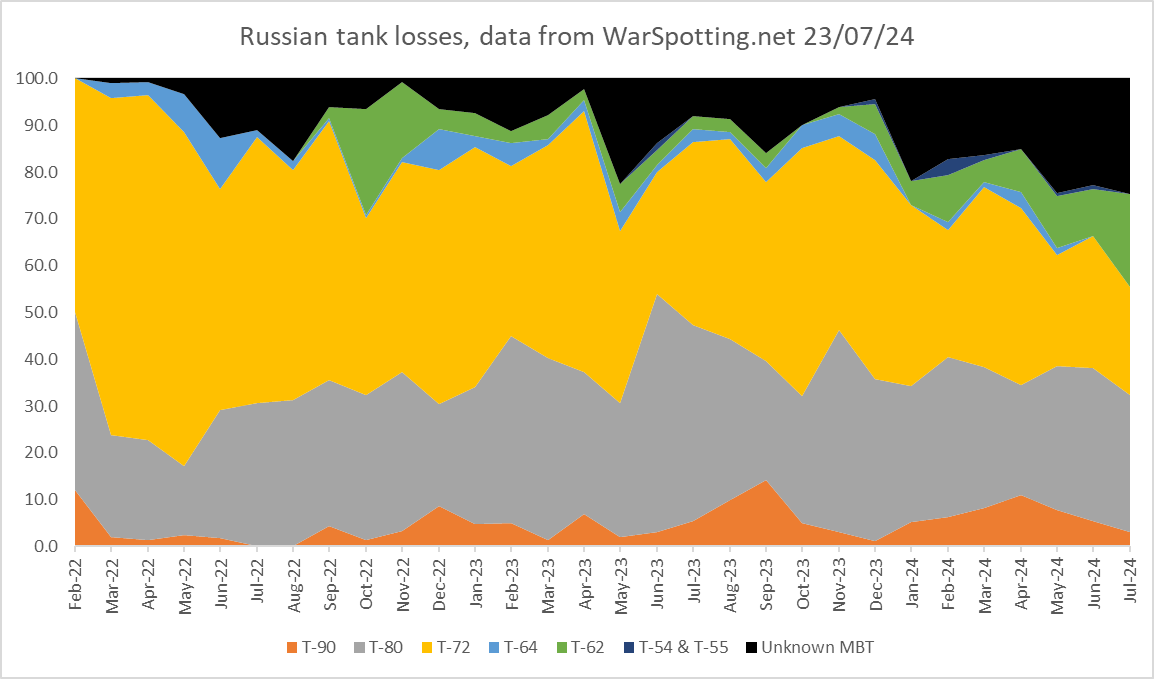1) This month so far, over a quarter of all Lost Russian tanks are the very old T-62 Type! (visually confirmed by @WarSpotting ) 26.5% In this graph I have added this month's losses to a 3-month rolling average by type. 

2) Looking at the variants of Russian T-62 lost doesn't seem to show much, other than originally they were mostly T-62Ms, and are now more of a mixed bag of everything. 

3) Before the war, Russia kept some T-62s running to help train tank personnel. Unknown number but perhaps 100. T-62s are cheaper to keep running than more sophisticated types. This created a surge of losses in around October 2023 when first deployed.
4) @HighMarsed recently did a count of Russian tanks left in storage, his Thred on that count is well worth a read.
https://twitter.com/HighMarsed/status/1809641392232075743
5) Amongst the caveats with this is that increasingly a lot of Lost Russian tanks are 'unknown Tank' i.e. impossible to say what type of tank it is, this increases the uncertainty about the Propotions of the other losses. 

6) Russian tank losses, by type in a table. All this data is from the @WarSpotting website. Thank you Warspotting.
Ends.
Ends.

• • •
Missing some Tweet in this thread? You can try to
force a refresh













